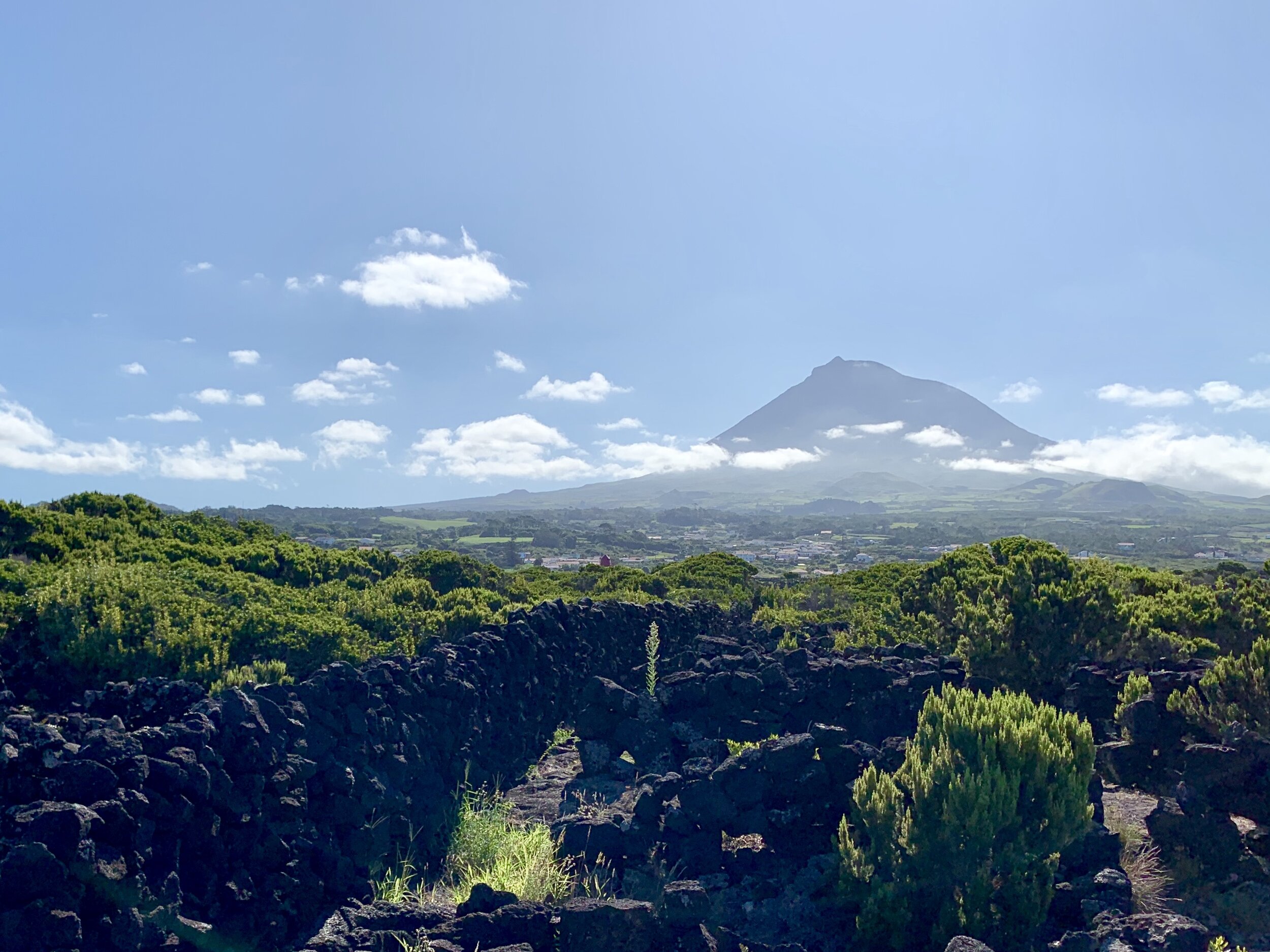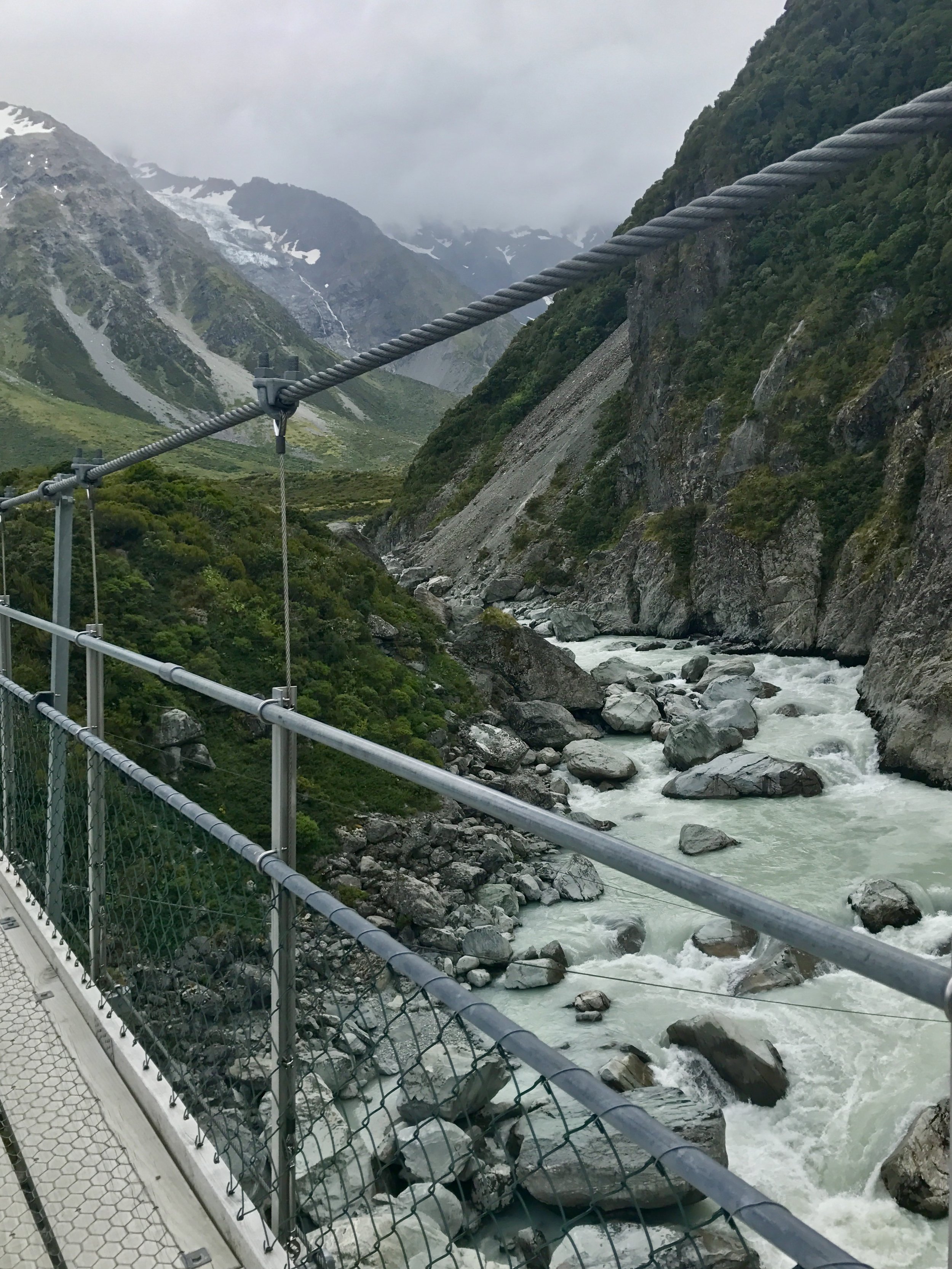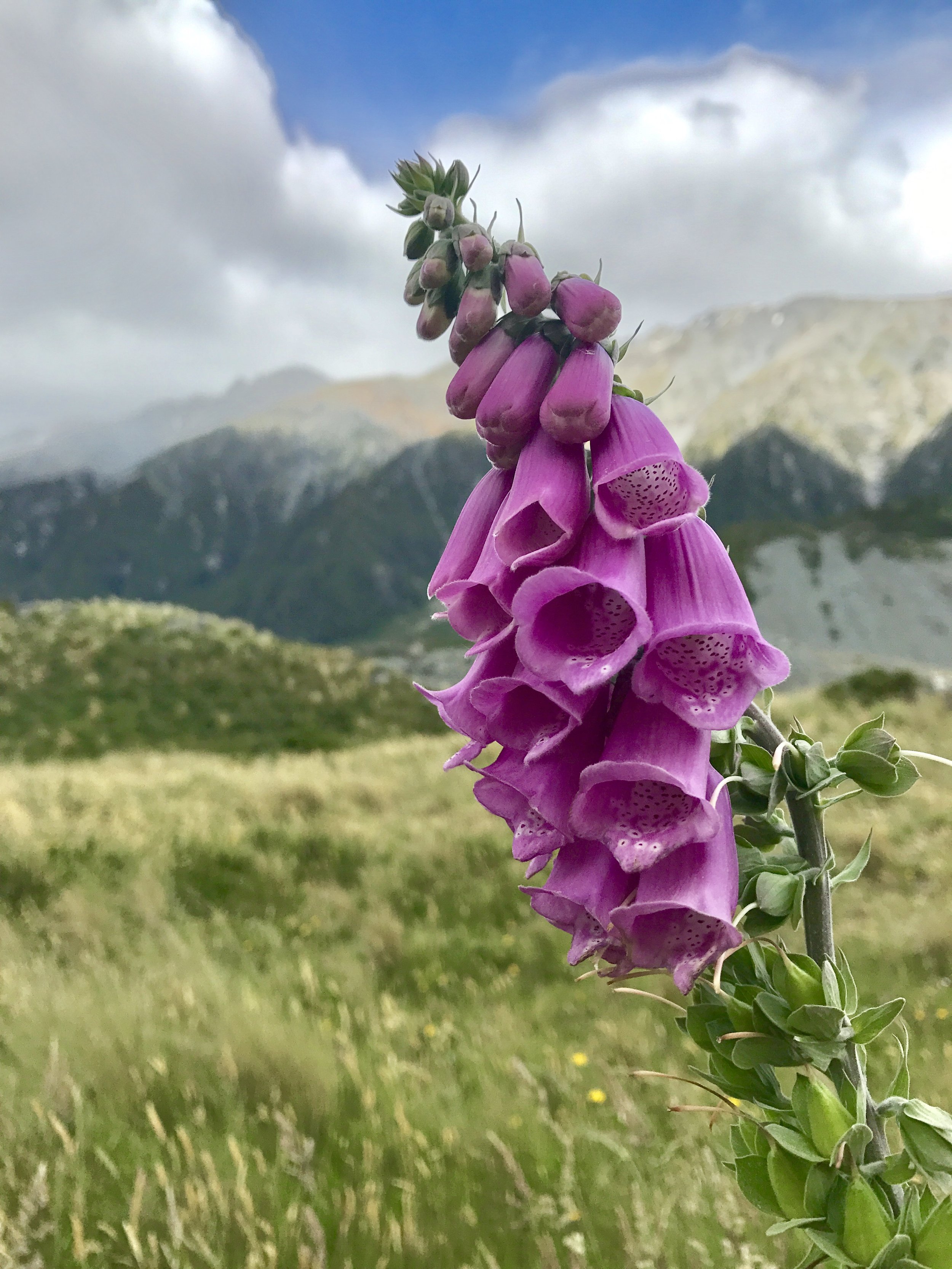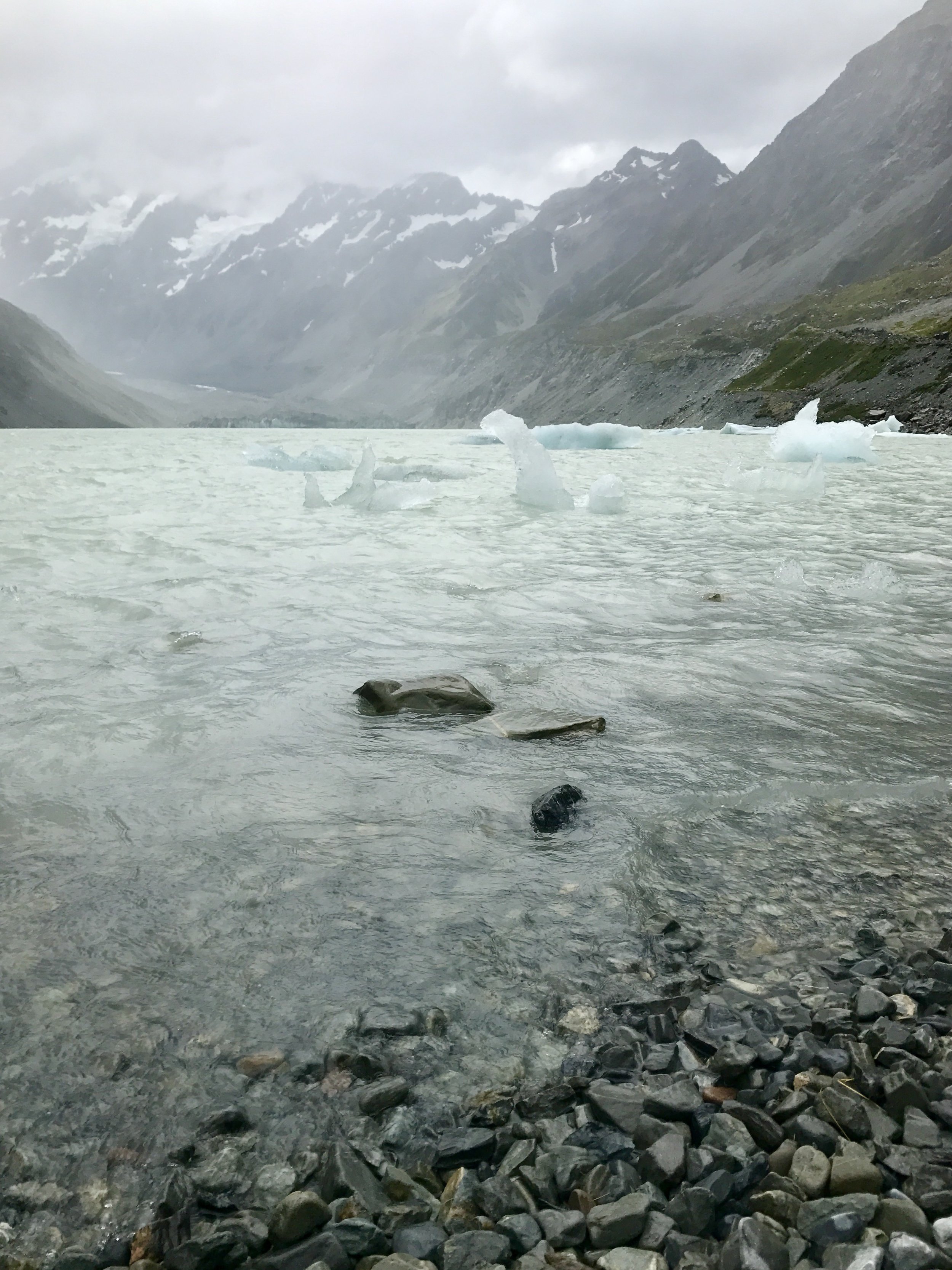With Delta offering nonstop flights (May-September only) from JFK to Ponta Delgada, now is the time to travel to the Azores, a set of nine volcanic islands in the middle of the Atlantic, some 1,000 miles west of mainland Portugal. Featuring a temperate climate, the isles are rarely particularly hot or cold, and they receive a fair amount of rain, typically in shorter, passing bursts, mostly in the mountainous interiors. Each island was formed at a different point in history, leading to dramatically different landscapes. Pico, the youngest island, is nearly all black, with bright green spots of grapevines pushing through the volcanic soil. São Miguel, the largest island, was formed over the course of millions of years, and features impossibly blue and green crater lakes and lush greenery.
The view from Miradouro da Grota do Inferno
We spent three days on São Miguel (four is probably the right amount of time), renting a car (a must to get to see the island) and frequently stopping en route. One of the highlights of any visits is the short walk up to Miradouro da Grota do Inferno, which offers a fantastic vantage point over the village of Sete Cidades and the surrounding blue and green crater lakes. Local legend has it that a princess fell in love with a shepherd boy, and the King forbade their marriage. They met one last time to embrace and cry, and as the princess’s eyes were green and the boy’s eyes were blue, the two lakes formed in those colours.
Mosteiros beach
Sizzling limpets (lapas) at Restaurante Gazcidla, Mosteiros
From there, we checked out the natural thermal pools by the ocean’s edge at Ponta da Ferraria. Wear close-toed shoes to hike across the sharp lava fields to the small natural pools that combine the cool ocean with the natural heat from the sulfurous hot springs. Afterwards, enjoy a lunch or dinner of the day’s catch of fresh fish and sizzling limpets (“lapas”) covered in garlic butter and lemon at Restaurante Gazcidla in nearby Mosteiros. The black sand beach here makes the ocean more accessible for a quick swim in the summertime.
The northern coast has some of the nicest beaches in São Miguel. Perhaps my favourite is the surfer haven of Praia do Areal de Santa Bárbara, where you will find a surf center and various options for rentals and lessons, as well as the oceanside Tuká Tulá bar and restaurant (reservations recommended for dinner), featuring some of the best limpets of the trip as well as cocktails with local gin and rum. The beach itself is a long stretch of black sand with multiple layers of breaking waves, perfect for swimming, surfing or bodyboarding. Afterwards, enjoy a steak dinner (the local meat is known for its rich flavour) at the Restaurante da Associação Agrícola de São Miguel, or stop for fresh fish and shellfish at Alabote Restaurante in coastally scenic Ribeira Grande. Nearby, you can also sample some of the local liqueurs (passionfruit is a particular favourite) at Ezequiel Moreira Silva & Filhos or Mulher de Capote in Ribeira Grande.
Praia do Areal de Santa Bárbara
Municipal pool at Ribeira Grande
Cozido das furnas
Perhaps the most interesting place to visit on São Miguel is Furnas, an area of high thermal activity, with several natural hot spring pools as well as sulfurous, steamy fissures. One of the typical dishes of the Azores, cozido das furnas, is made here. The dish is a meat and vegetable stew that is placed a few feet underground and cooked by the natural heat in the area. One of the best places to try it (and to stay the night) is the Terra Nostra Garden hotel, which offers it a la carte or as part of a 3-course menu at its beautiful restaurant overlooking the hotel gardens. By dining at the restaurant, you’ll also receive passes for free entrance to the hotel’s park and hot springs (normally a cost of 8 EUR/person), which are a great place to spend the afternoon.
One of the Terra Nostra thermal pools
Afterwards, don’t miss the view from Miradouro do Pico do Ferro, a vantage point with a view of the Furnas lake and the place where the restaurants dig in their cozido pots (to go there directly, arrive by 12pm, and be prepared to pay a few euros a person to gain access to the grounds).
Salto do Cabrito
Hiking on São Miguel
To cool off, we went for a swim at the Salto do Cabrito, an impossibly scenic waterfall that has carved its path through the surrounding rock. Don’t be afraid to drive all the way down the road, which can be a bit steep, to shorten your path to the falls, and bring water shoes, as getting into the falls is rocky and slippery. Not swimmable, but also beautiful, are the waterfalls at the Parque Natural dos Caldeirões, from where you can do numerous hikes as well as abseiling and canyoning. Follow it with a free introduction and sampling of the tea at the Porto Formoso tea factory along the north coast, and stop off at the Miradouro de Santa Iria for sweeping views of the northern coastline.
Miradouro de Santa Iria
Pineapples growing on the Arruda plantation
Ponta Delgada
Mercado da Graça, Ponta Delgada
Ponta Delgada, the Azores’ largest town, has a relatively walkable center, but is otherwise not particularly pedestrian friendly, and it has a severe parking shortage. We dropped by O rei dos queijos to try (and buy) some Azorean cheeses and bolos, the local bread, and checked out the fruits and vegetables for sale at the Mercado da Graça next door. On the outskirts of town, Ananases A Arruda is a pineapple plantation (an important local product) where you can view the different stages of pineapple farming and sample them in various formats at the onsite cafe.
We also visited two other islands, Faial and Pico. The best way to reach either is to fly via Azores Airlines (50 minutes), taking the ferry to get between Faial and Pico (30 minutes). Faial’s highlight is probably the Praia Do Almoxarife, from which on a clear morning you can clearly see Pico mountain, Portugal’s highest peak, on the neighbouring island of the same name. Also worth a visit is the Caldeira do Cabeço Gordo, from which you can do a number of different hikes across the island, as well as the Centro de Interpretação do Vulcão dos Capelinhos, from where you can see the destruction caused by the 1957-58 eruption of the Capelinhos volcano and the stunning surrounding landscape. For lunch, we had a delicious octopus salad and Portuguese sparkling wine at Praya, overlooking the Praia do Almoxarife. For dinner, I highly recommend Restaurante Canto da Doca in Horta, where you receive a hot slab of volcanic stone together with a selection of raw seafoods and meats, and you proceed to cook your own dinner to your liking.
A magical viewpoint on Faial
Praia do Almoxarife, Faial, with Pico obscured by clouds in the background
Cooking our own seafood and meats on a volcanic stone at Restaurante Canto da Doca, Horta, Faial
But Pico is the real stunner here, dark and dramatic, where more acidic, typically white wine is made from the grapevines growing in the volcanic soil beneath the looming peak of Pico (tastings are available at the Cooperativa in Madalena). The mountain is hikeable, though ideally requires starting in the middle of the night in order to reach the summit by sunrise. Numerous agencies and guides on the island offer the trip, and you get a t-shirt to commemorate the accomplishment. Also well worth a visit is the Gruta das Torres (reservations recommended), where over the course of an hour, a guide took us through a few hundred metres of Europe’s longest lava tube, a fascinating experience. Afterwards, we enjoyed lunch with a view at the modern Cella Bar just north of Madalena. Don’t miss the octopus salad, and the pork ribs were delicious. It can get windy, so bring a jacket. It was so good, we found ourselves back for dinner, during which we discussed returning again next year. Go before the Azores get more of the attention they deserve.
Volcanic vineyards on Pico
Exiting the Gruta das Torres lava tube on Pico
A selection of local cheeses al fresco at Cella Bar on Pico
Packing list:
Rain jacket
Mosquito repellent
Bathing suit (bring an old one that you don’t mind getting discoloured from the sulfur in the hot springs)
Hiking shoes
Water shoes
Where to stay:
Praia de Santos Exclusive Guesthouse, Ponta Delgada, São Miguel
Hotel Verde Mar & Spa, Riberia Grande, São Miguel
Terra Nostra Garden hotel, Furnas, São Miguel
Hotel do Canal, Horta, Faial
Pocinho Bay, Pico
Where to eat:
Tuká Tulá bar and restaurant, Ribeira Grande, São Miguel
Restaurante da Associação Agrícola de São Miguel, Ribeira Grande, São Miguel
Alabote, Ribeira Grande, São Miguel
Restaurante Gazcidla, Mosteiros, São Miguel
Terra Nostra Garden hotel, Furnas, São Miguel
Praya, Faial
Restaurante Canto da Doca, Faial
Cella Bar, Pico























































